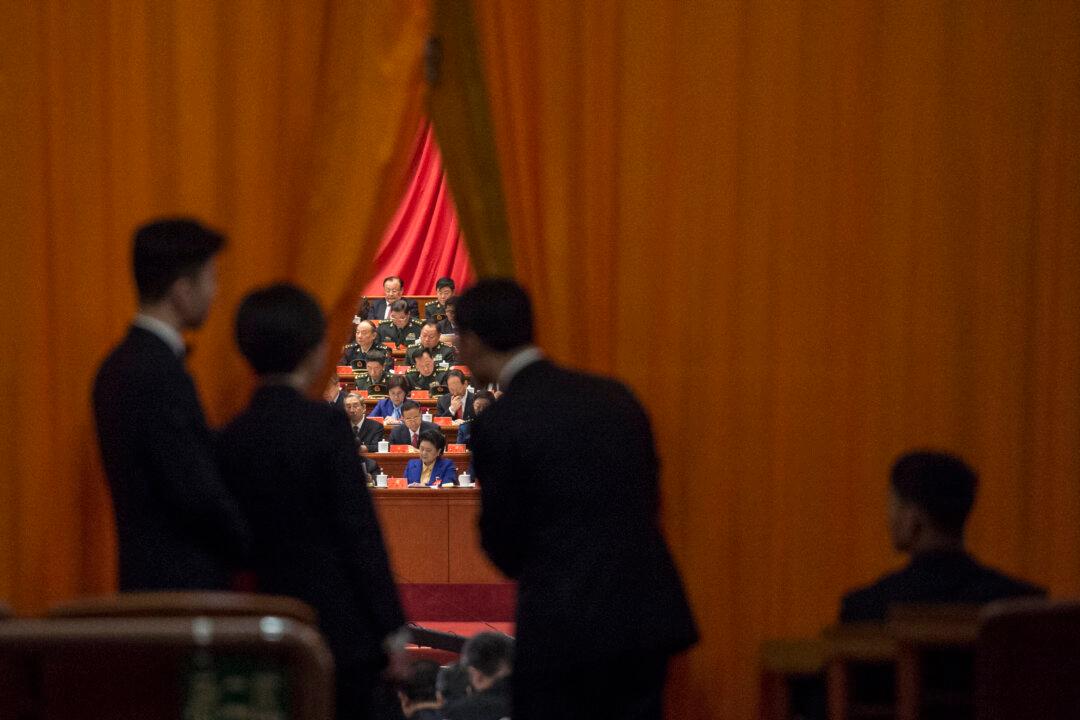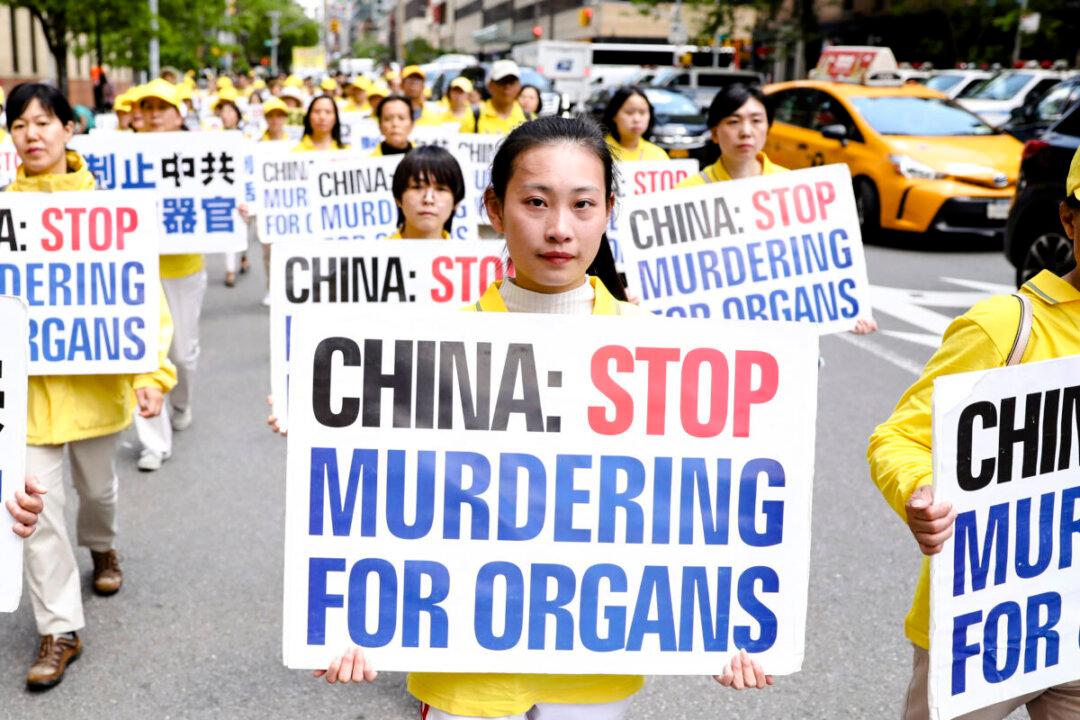Commentary
Sen. Tom Cotton’s (R-Ark.) latest book, “Seven Things You Can’t Say About China,” rips back the curtain on the Chinese Communist Party’s persistent influence and ongoing efforts to suppress political, economic, and social freedoms. While much of the global conversation surrounding China focuses on trade and military expansion, a critical and often overlooked aspect of Beijing’s authoritarianism is its systematic persecution of religious groups.
China’s efforts are no longer confined to traditional methods of censorship and intimidation; it has expanded into a sophisticated network of surveillance technology and economic coercion, aiding its efforts to silence dissent both at home and abroad.
A State-Controlled Faith: China’s War on Religious Freedom
China does not abide religious independence. Instead, it allows for only five state-sanctioned religions—Buddhism, Taoism, Islam, Protestantism, and Catholicism—which must operate under strict government oversight. Clergy members are required to pledge allegiance to the Communist Party, while sermons must incorporate elements of Xi Jinping Thought on Socialism with Chinese Characteristics. The Sinicization of Religion program mandates the alignment of religious practices with Chinese political ideology, effectively eliminating any space for true spiritual autonomy and holding those who aspire for true religious freedom strictly accountable.For Christians, the control is particularly invasive. Churches have been raided and forced to remove images of Jesus Christ or the Virgin Mary, replacing them with portraits of regime leader Xi Jinping. Congregations are required to sing Communist Party anthems during worship, while surveillance cameras have been installed in places of worship to track attendees. Children and students are banned from attending religious services, using the education system to drive a wedge between parent and child, while ensuring that future generations grow up without exposure to independent faith.
In regions like Xinjiang, the persecution is even more extreme. Uyghur Muslims face mass detentions, forced labor, and ideological indoctrination, all aimed at erasing their religious and cultural identity. Reports indicate that more than 10,000 individuals were imprisoned in 2023 for practicing their faith.
These attacks are particularly disheartening when we consider that, in a country of 1.4 billion people, fewer than 25 percent adhere to any religion.
Technology as a Weapon of Suppression
China is perfecting its persecution of religious groups. No longer simply about physical oppression, it now harnesses the world’s most advanced surveillance infrastructures. Authorities utilize facial recognition, biometric tracking, and AI-driven predictive policing to monitor religious communities, making it nearly impossible to practice faith outside the government’s oversight.The Integrated Joint Operations Platform (IJOP) serves as a nationwide surveillance system, flagging individuals based on their travel patterns, online activity, and personal associations. In Xinjiang, this technology was developed to monitor Uyghur Muslims, creating a high-tech police state where religious practices are surveilled and cataloged. House churches and underground Christian movements are being monitored using the same capabilities. Worshippers attending unauthorized gatherings are identified through facial recognition cameras placed in church entrances. Comprehensive databases now make it easier for authorities to conduct targeted operations on religious leaders and their congregations.
Meanwhile, digital censorship ensures that religious discourse remains firmly under state control. Religious websites, online sermons, and digital faith communities must receive government approval to exist. Chinese authorities routinely shut down platforms that distribute religious materials, ensuring that spiritual teachings remain inaccessible outside of state-sanctioned institutions. Furthermore, China is rewriting the Bible and will issue a version with the ‘‘correct understanding’’ of the text according to the Chinese Communist Party.
The Economic Side of Religious Persecution
China’s war on faith is firmly nested in its global economic strategy. Forced labor involving religious minorities—particularly Uyghurs—has created an ethically compromised supply chain that reaches international markets. Industries such as textiles, electronics, and solar panel manufacturing have been linked to forced Uyghur labor, pushing Western corporations into difficult trade dilemmas. These dilemmas are often overlooked in the interest of trade with China.Beyond forced labor, China has leveraged economic dependency to suppress global criticism of its human rights abuses. Through the Belt and Road Initiative (BRI), Beijing has entrenched its financial influence across Africa, South Asia, and Latin America. Many nations reliant on Chinese investment falter when it comes to condemning Beijing’s persecution of religious minorities. They chose diplomatic silence rather than jeopardizing trade relations.
Even in the United States and other Western countries, China exploits economic retaliations to silence dissent. Corporations that criticize Beijing’s human rights record frequently face trade restrictions or are blocked from the Chinese market. Hollywood studios, for example, have self-censored films to ensure continued access to Chinese consumers, while American Universities avoid public criticism of China’s religious persecution to protect financial partnerships, grants, and fellowships.
What Comes Next?
While the United States has responded with legislative efforts such as the Combatting the Persecution of Religious Groups in China Act, the real challenge lies in enforcement. Trade restrictions, diplomatic pressure campaigns, and open challenges to this abusive behavior must be strengthened to counter China’s ongoing violations.Internationally, China’s export of surveillance technology to authoritarian regimes raises deeper concerns. Many governments have purchased Chinese facial recognition systems, signaling a growing trend where state-driven religious persecution could spread beyond China. Furthermore, the developing emotional recognition software and AI interfaces may lead to even more subversive targeting capabilities. If left unchecked, Beijing’s suppression tactics could set a dangerous precedent for how governments regulate faith.
The Future of Religious Freedom in China
Under Xi Jinping’s leadership, China’s religious persecution has evolved into a multi-dimensional strategy, combining state control, economic leverage, and technological suppression to dismantle independent faith communities. The question now is whether Western nations will move beyond rhetoric to take tangible steps in response. Economic policy, diplomatic alliances, and counter-surveillance measures will determine whether Beijing’s war on religious freedom continues unchallenged—or whether global pressure forces a reckoning.For now, Cotton’s book highlights an uncomfortable truth: China’s human rights abuses are not isolated incidents—they are a calculated strategy designed to reshape global governance. And unless the world takes action, the consequences will extend far beyond China’s borders.
Views expressed in this article are opinions of the author and do not necessarily reflect the views of The Epoch Times.







